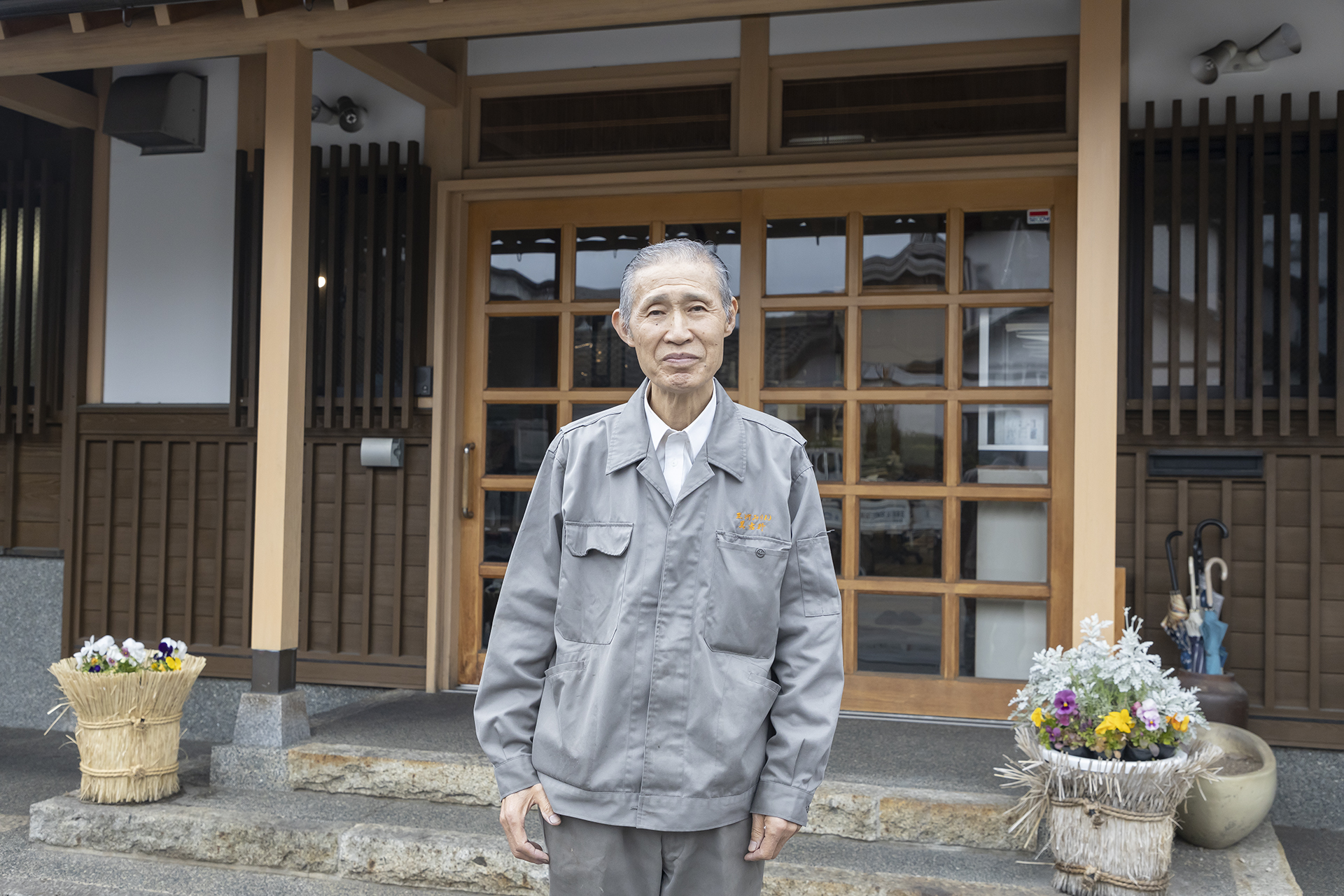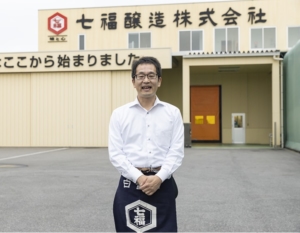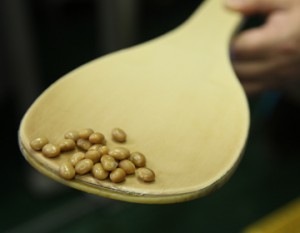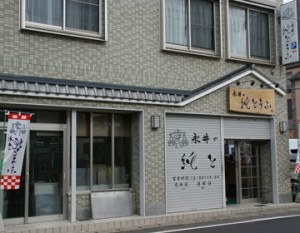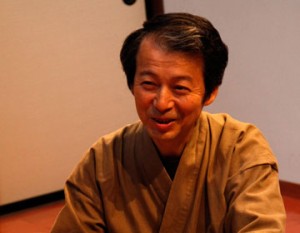Kakutani Bunjiro Shoten, a mirin brewer, was founded in 1910 in Hekinan City in southeastern Aichi Prefecture. Sanshu Mikawa Mirin, carefully brewed with a focus on bringing out the original flavor of rice, was used for appetizers and takitomi at the 2016 Ise-Shima Summit, helping to enhance the flavor of dishes served to the heads of countries, and is highly regarded by culinary professionals. The brewer is Toshio Kakutani, the third president of Kakutani Bunjiro Shoten. After many years of involvement in mirin brewing, Mr. Kakutani’s next step is to further expand the possibilities of mirin, with an eye to overseas markets as well.
Kakutani Bunjiro Shoten’s commitment to “Mastering Mirin” in Aichi Prefecture
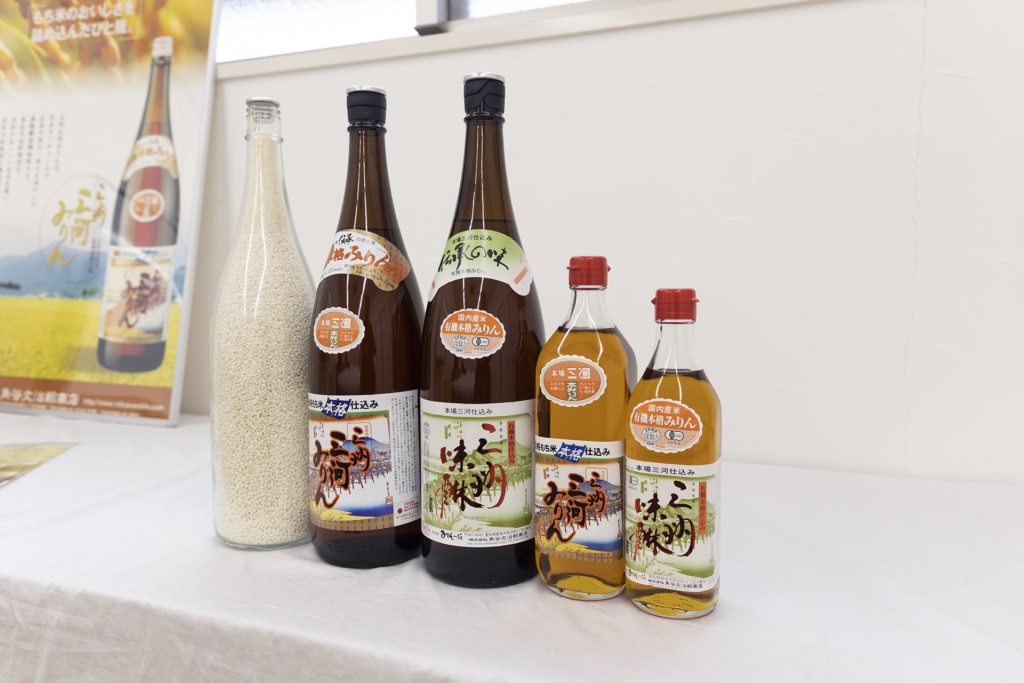
Hekinan City is a small town with a population of 70,000 facing Mikawa Bay in southeastern Aichi Prefecture. Blessed with an abundance of water and mild weather, the town has been dealing with mirin (sweet sake) for over 100 years. Sanshu Mikawa Mirin, the signature product of Kakutani Bunjiro Shoten, is a mirin made by brewing glutinous rice to bring out the best flavor of glutinous rice. This seasoning has a refined sweetness, umami flavor, and a brightness and luster that makes ingredients shine. Mr. Kakutani says, “At my age, I want to convey the deliciousness of mirin to people more than just selling a lot of mirin. That is the goal I am aiming for now: to master mirin.
Why Mirin is the best seasoning for the Japanese diet
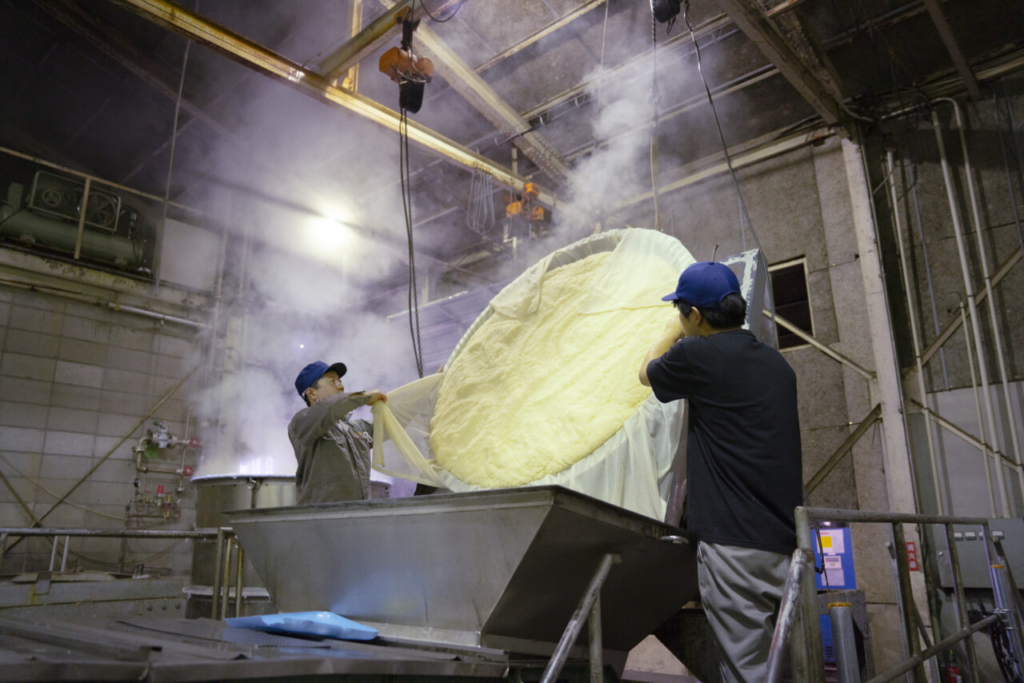
Mirin is said to have been created as a beverage sake during the Warring States period. It was around the Edo period that it came to be used as a seasoning. People began to demand sweetness in their cooking, but sugar was still a luxury item at that time. Mirin, which is cheaper than sugar and has a sweetness derived from rice, which is familiar to Japanese people, came into use. Mirin not only adds sweetness and shine to food, but also has an “azeotrope” effect, in which the alcohol in mirin evaporates together with the odor component when heated, and a “masking” effect, in which the aroma produced by the brewing process removes the fishy smell of meat and fish. Mirin, therefore, became widely used in Japan, where fish was widely consumed, as it not only added flavor but also reduced the fishy smell of fish.
Mirin also has a high water retention property, preventing excessive water loss from foodstuffs. In recent years, some bakeries have begun to incorporate mirin into their baking processes, focusing on its water retention properties. In fact, the water retention after baking keeps the bread moist without reducing the loaf.
Mirin making is a byproduct of the brewing culture

Surrounded by abundant water sources, the Mikawa region had easy access to rice, wheat, and soybeans, and the brewing industry flourished for more than 200 years. With the construction of a port that served as a logistics hub, a variety of traders came in and out of the region from all over the country, and the brewing industry further developed as brewed products made in the region were transported to other parts of the country.
From the end of the Edo period to the Meiji period (1868-1912), the city became as famous for sake as Nada (Kobe) and Fushimi (Kyoto), both famous sake-producing areas in Japan. The sake lees produced during the sake brewing process became easily available, and shochu made from the sake lees was used to brew mirin (sweet cooking sake) in the Mikawa region.
As can be seen from this, mirin is made by preparing shochu, glutinous rice, and rice malt. The process also produces lees, just like sake production. According to Mr. Kakutani, in his predecessor’s time, he sold the lees to pickle shops in Nagoya instead of discarding them. The proceeds were used to purchase rice for the following year. Mr. Kakutani says, “I think we were able to make luxurious, high-quality mirin because we had a company that was willing to buy the sake lees at a high price, rather than just throwing them away. At first, the company only dealt in sake lees, but it gradually built relationships with pickle stores, and some of them began to consider manufacturing products using the mirin produced by the company. One such shop is a long-established pickles store in Nagoya. Mirin (sweet sake) lees produced by Kakutani Bunjiro Shoten are also used in the store’s Nara-zuke pickles, and have become an important factor in supporting the popularity of this local specialty product that represents Aichi Prefecture.
Allow it to brew long enough so that the flavor is cohesive.

The long process of brewing and maturing the unrefined rice (moromi) together with rice malt and shochu (distilled spirit) is an important step in the production of mirin. The rice starch is broken down into glucose and protein into amino acids by the rice malt, resulting in sweet and tasty mirin. The flavor of mirin is enriched by shochu (distilled spirit), which is distilled in house. It is then aged in the brewing tank for about three months before being pressed and further aged. After more than a year of maturation, the flavor is matured and the mirin is finally complete.
There is a reason why mirin is matured further after three months have already been spent at the stage of pressing the matured unrefined sake. Mirin immediately after pressing is a mixture of the sweetness of glucose, the umami of amino acids, and the spiciness of the shochu used to make it, and the taste is uneven. Mirin is then matured to remove the bitterness, and the flavor is combined to make it mellower and more rounded.
Difference between Hon Mirin and Mirin-like Seasonings

Hon Mirin is made by taking the time to mature the rice to maximize its flavor. Shochu (distilled spirit) with an alcohol content of over 40% is used in the brewing process, resulting in a finished product with an alcohol content of around 14%. Under the Liquor Tax Law, it is classified as a “liquor” and is subject to liquor tax when sold.
On the other hand, mirin-like seasonings, which are inexpensive and widely sold in supermarkets, are a blend of rice malt, glucose, syrup and other sugars, umami seasoning, flavoring, etc., and have an alcohol content of less than 1%. It requires less time and effort to brew, and can be obtained cheaply because it does not incur liquor tax. If you are not familiar with the difference between mirin-like seasonings and hon mirin, it is difficult to tell the difference, but there is a big difference in the taste of dishes made with both.
Mirin and hon mirin both have the same effect of adding sweetness to dishes, but the alcohol in hon mirin also has the effect of preventing cooking from falling apart and of allowing the flavor of other seasonings to permeate and soak into the ingredients. This explains why it is often said that “the mere use of hon mirin raises the quality of a dish. It is precisely because inexpensive mirin-like seasonings are widely available today, Kakutani Bunjiro Shoten insists on hon mirin, which “makes a difference in cooking,” and continues to preserve its traditional flavor.
For seasonings used all over the world

Mr. Kakutani repeats this phrase, “Master mirin. Mr. Kakutani repeats this phrase repeatedly, but he also says, “If our business gets thin after we have mastered mirin, it will not be possible to run it. He is actively visiting overseas business meetings to promote the use of mirin in Western cuisine. He believes that by dispelling the image of mirin as a seasoning for Japanese cuisine, he can open up the future of mirin in a big way. Mr. Kakutani is determined to spread the world’s use of mirin, which is produced through the art of brewing, before mirin-like seasonings become the mainstream.
Efforts to enhance the value of “glutinous rice liqueur

Mr. Kakutani calls mirin “glutinous rice liqueur. This is only because he is proud of the brewing method that brings out the sweetness and flavor of rice in shochu. And because he wants to change the image of shochu as a seasoning only for Japanese cuisine.
Also, by calling it a liqueur, we aim to make it easy to incorporate into various genres of cuisine. Kakutani has been exploring the possibilities of mirin by asking famous chefs to use it in French cuisine and other dishes.
Mr. Kakutani is proud that the world is gradually recognizing mirin’s rice-derived umami and the flavors added by aging. However, when a French pastry chef used mirin in his chocolate, he was a bit surprised. When I heard about it, I thought it was surprising,” he says. But it is a liqueur made from rice. If you think of it as a liqueur, it should work well in sweets as well.
Using safe raw materials is the future of the producer.

Kakutani Bunjiro Shoten also produces “Organic Sanshu Mirin” made from domestic organic rice. This product, made using only domestically produced organic rice in a traditional process, was the first organic mirin in Japan. Although Mirin has been produced long before the word “organic” became popular, there are almost no other makers producing Mirin with organic rice even today. Compared to Sanshu Mikawa Mirin, which has a strong sweet taste, organic Mirin has a gentle, soft flavor and a fruity aroma that is unique to rice. Because of its mildness, the presence of alcohol on the tongue is felt more strongly than in other products, which is also unique to this product.
In 2000, they obtained organic certification. In the beginning, they had to work hard to secure the large amount of organic rice needed to make mirin, but they have continued their efforts with persistence. He says, “Eating and using products harvested in the fields and rice paddies that have been handed down through the generations in Japan is also a way of preserving the local environment. If there is no one to eat what is harvested there, the farmers would be worried. By expressing our willingness to “eat the produce because it was harvested in the area,” the farmers can grow vegetables and rice with peace of mind. I believe that this will also nurture their successors,” says Kakutani.
The Mikawa region of Aichi Prefecture is blessed with water and climate, and the richness of the land has led to the development of a brewing culture, and mirin production began as a byproduct of that culture. Mr. Kakutani continues to take on the challenge of passing on this heritage.



